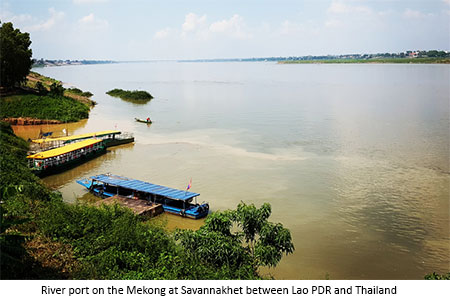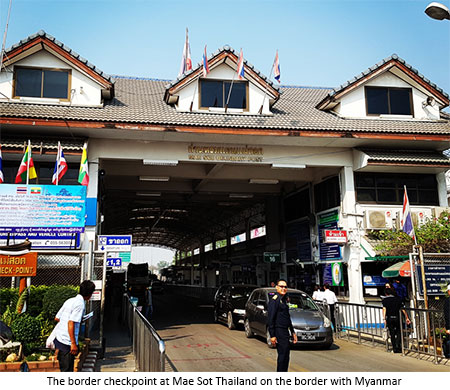
Da Nang (Viet Nam), 3 April 2017 - Police leaders from the six countries of the Mekong, and the UN Office on Drugs and Crime (UNODC), have completed a week-long drug and precursor trafficking assessment of the East-West Economic Corridor that connects Myanmar, Thailand, Lao PDR and Viet Nam. In-depth inspections were conducted of roads, bridges, check-points, border crossings, and front line capacities for the first time along the primary economic corridor transecting the Mekong.
Part of an economic development program initiated to promote integration of the four countries it connects, the East-West Economic Corridor became operational on December 12, 2006, with different projects being implemented to improve cross-border connections and accelerate trade. However, there are strong indications that organised crime and associated problems are expanding and diversifying by exploiting intensifying regional integration processes and programmes, particularly through the development and expansion of economic corridors and cross border infrastructure.
In order to gain a better understanding of issues on the ground, and subsequently direct resources and shape policy, the assessment team has conducted assessments starting from Myawaddy in Myanmar's border with Thailand, to Savannakhet in Lao PDR and concluding in Da Nang, Viet Nam, covering the primary transit areas and points of concern on the route.

"This assessment focuses on some locations that we know are increasingly used by traffickers and need attention," said Mr. Wei Xiaojun of the National Narcotics Control Commission, China. "It is important for us to see and appreciate the situation for what it is so we can be better prepared and respond."
"There are some similar capacity issues, but also some differences. Ultimately we will be considering how we can capitalise on existing mechanisms like border liaison offices to better deal with drug and precursor trafficking across the corridor and the Mekong," said Mr. Zhiqiang Tao, UNODC Regional Officer. "It is also important that we do this with police leaders of the different countries so they consider the issues together and agree to how respond. "
Preliminary findings show that in addition to gaps in interdiction capacities at formal border crossings, informal crossings are also numerous. Already, the assessment has pinpointed areas where more resources need to be allocated, and capacities need to be strengthened - particularly in facilitating greater information sharing and cooperation between the countries' border and enforcement agencies.
The geographic challenges were highlighted by Mr. Chandu Bhandari, UNODC Regional Adviser, who noted that, "we are taking the diversity of border areas and scale of the landscape into consideration." He added, "organised crime groups operating in the region have significantly more capacity than front-line officers and agencies that are tasked with dealing with them."
"The series of assessments we have done the past couple of years - including on Asian Highway Route R3B, the Mekong river, and Myanmar's border regions with China and India including the Special Regions - allow us to paint a regional picture of the issues and how we need to better deal with them," said Mr. Bhandari. "We will be using this assessment alongside our others to recommended strategies and mobilise resources to assist, and to agree to policy and operational recommendations."
The assessment was undertaken as agreed by the six countries of the Mekong MOU - a mechanism that has allowed numerous initiatives of this scale to take place.
Click here to learn more about the Mekong MOU.
Click here to learn more about the UNODC Regional Programme for Southeast Asia.